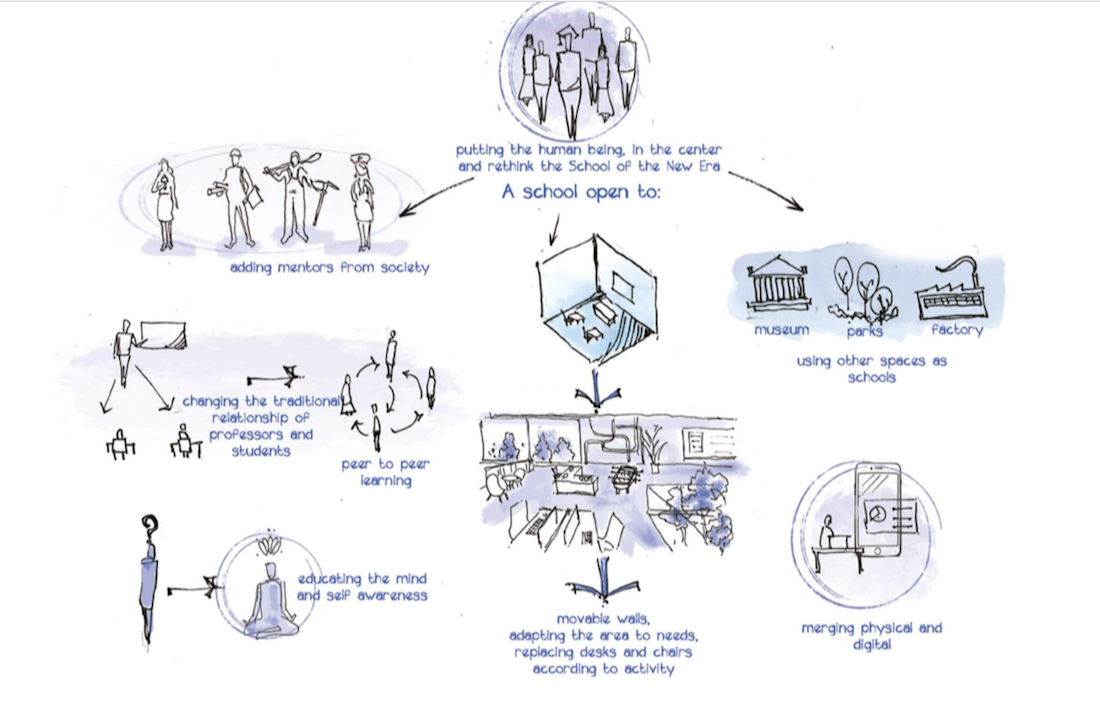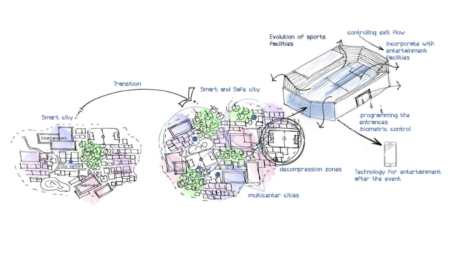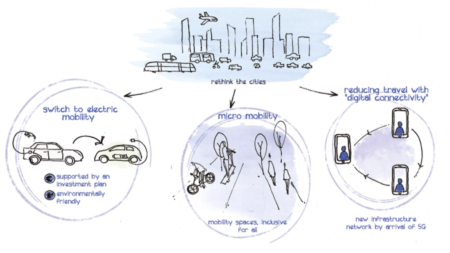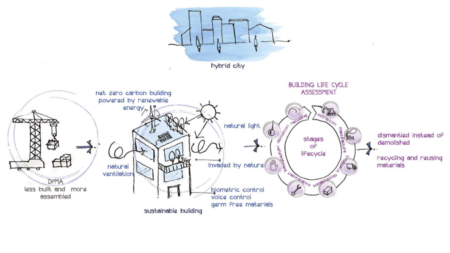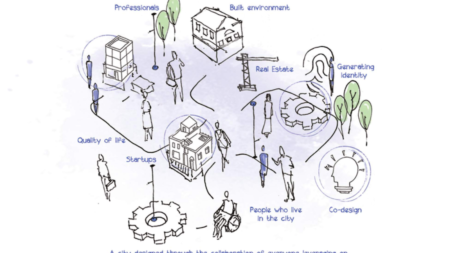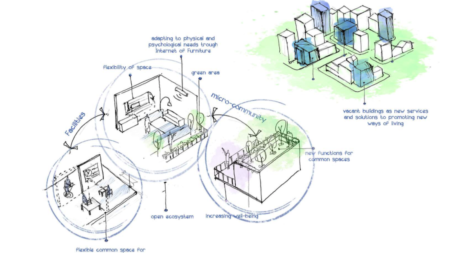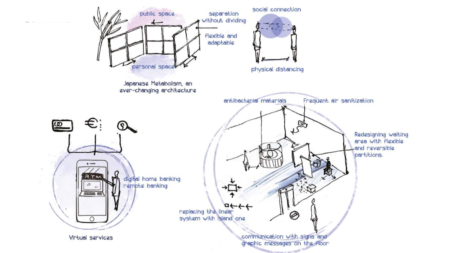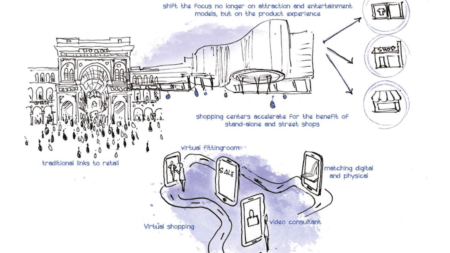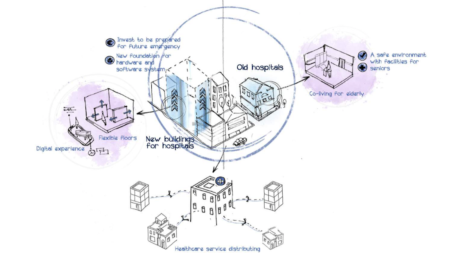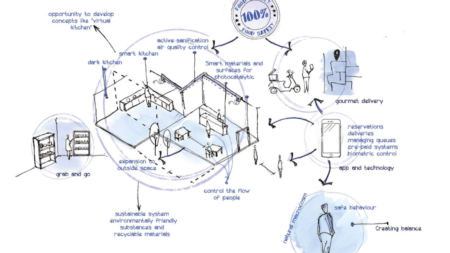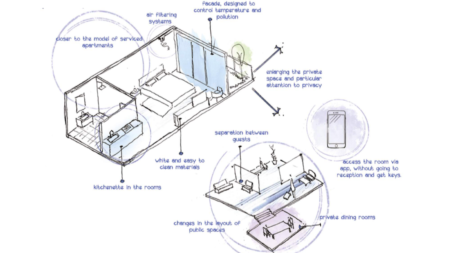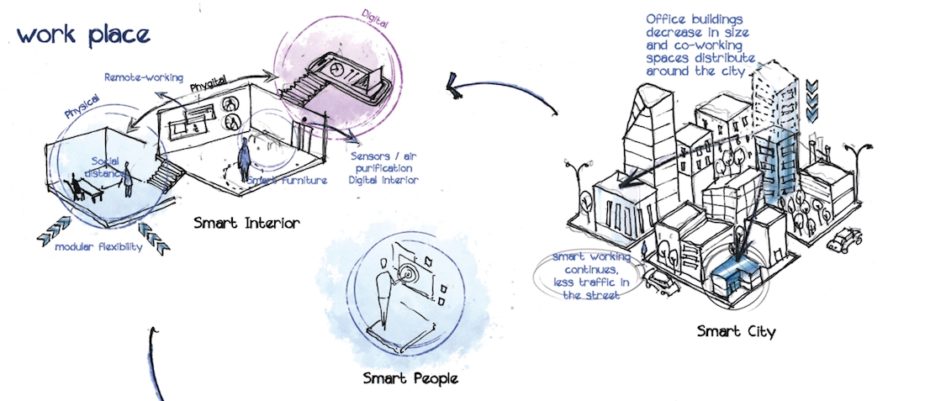
DesignTech is a technological innovation hub focused on design generated in MIND (the new Milan Innovation District) with the aim of improving the quality of environment and life of the people.
During the covid-19 emergency, a task force set up white paper “DesignTech for the Future” to identify the role technology and design can play in the redesign of the post-pandemic world.
The work was carried out through 16 areas and 13 thematic tables that involved excellent players from various sectors (architecture and design studios, professionals from the world of catering, school and healthcare, etc.).
Download the full white paper pdf “DesignTech for the Future” here.
DesignTech initiates a debate over how design, together with technology, can play a fundamental role in tracing the path from “before” to “after” covid-19.
“With the pandemic all critical issues and limits of the city have come to surface, sometimes in dramatic ways. Infrastructures, architectures, environments and lifestyles were instructed by obsolete models. We believe this is the right historical moment to draw the image of the new world we want to live in and take care”.
“In this spirit we have conceived this White Paper. It speaks to the institutions and to the market participants with the objective of calling attention to the importance of planning, investing in research and activating dynamics of open innovation even in this area. It highlights the social, economic and environmental impact of innovative and sustainable measures that put humans and the environment at their center”. the introduction quoted.
These are the 13 thematic tables and their coordinators:
1 Real Estate: Lendlease with Giuseppe Tortato Architetti
2 Living: Pininfarina Architecture
3 Workplace: DEGW/Lombardini 22 con Workitect
4 Healthcare: Binini Partners with Centro Medico Santagostino
5 Restaurant: Lai Studio with Food Lifestyle di Paolo Barichella
6 Retail: Piuarch
7 Banking: MBA+D Matteo Belfiore Architecture + Design
8 Hospitality: Zaha Hadid Architects
9 Public Spaces: Progetto CMR
10 Mobility: MIC Mobility in Chain
11 Supply Chain: PwC Italy I Operations
12 Social Innovation: PwC Italy, New Ventures, Innovation
13 Education: School for Dreamers
Below a summary focused on the post covid-19 Workplace developed by DEGW with the support of Workitect.
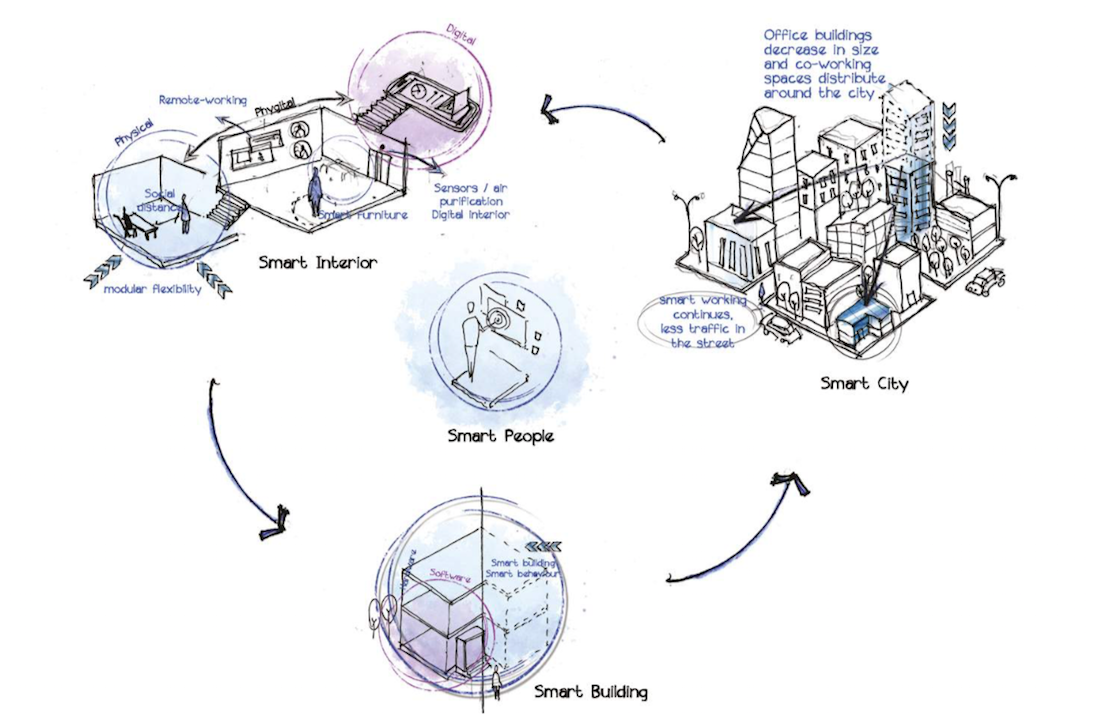
Work communities have been for long time physical/virtual mixed entities, only partially linked to a tangible place.
Covid-19 has taken this polarity to the extreme by shifting the weight to the digital side and has put the most innovative office spaces in the background.
The return to companies will pose new problems to the fluidity of the spaces, to functional hybridization, to “collisions” between different people and businesses. It is a technical-medical challenge but also a symbolic one.
Workplace culture and social role
The symbolic value of the physical space remains crucial for the organizational balance: it is where corporate culture is generated, it is the point of reconstruction between strong and weak bonds. Today it will have to give rise to “enabling systems” that combine potential vulnerability and real protection: “no-risk places” capable of handling sudden emergencies.
Immediately, it is necessary to balance objective (according to the regulations) and subjective (perception of risk) factors: caution, gradual return and clear communication programs (change management) are required.
Smart environments and behaviors
A stress test of the buildings is essential: they must guarantee different flows, compartments, low density levels and activate frequent sanitization programs (air and surfaces), mechanical ventilation, in relation to the energy performance expected from the building-plant systems and environmental well-being, is a sensitive issue.
In perspective, touchless technologies will have to be implemented: sensors, automation, voice commands.
Organizational demand and relocation
The boom in smart working and remote working is an accelerator that has also demonstrated unexpected efficiencies: more alignment, less interference, more order in carrying out tasks, more connection even if distant.
Many activities will continue and perhaps stabilize according to the types of office work.
Coworking
Where turnover is more frequent and internal mobility less “traceable”, uncertainty and perception of risk are more acute. Can coworking still play a role?
The balance between shared services and profitable common areas is destined to change: more divisors and private offices will have to be foreseen, less random meetings between different teams and companies, limitations in meeting rooms, rarefactions of hot desks, etc.
As a “relationship hub” it will change its operational and identity DNA. Is it the end of coworking? Probably not. You can expect new customer flows that will be generated in a perspective of corporate lightening and adaptation to changes. It will be able to provide proximity spaces for the new wave of remote workers.
Smart working and leadership
Being remotely operational, which we are experiencing massively due to Covid-19, has diluted the factors of work cohesion in the workplace: on the management side, the emphasis shifts “from workplace to workforce”, and this has an impact not only on the role of technologies, fundamental for maintaining relationship continuity, but also on leadership models.
We will have to accelerate towards evolved models that provide for trust, delegation, widespread responsibility.
Technologies and biophilic design
Technology is perhaps the weakest link in Italy, especially in the lack of homogeneity in connection of the territory. We trust that this period can give a strong boost to the current context. In perspective, more and more space will be “phygital” (fusion of physical + digital), we will have “intelligent dialogues” with objects (IoT), we will generate more and more interpretable data thanks to analytics. In this “future”, smartphones and smart furniture will be at the service of comfort and increased experiences in digital interiors.
But also, material and natural interiors will need to be designed with new considerations and embracing the themes of fear and stress. New forms of material certification can be envisioned. While today, biophilic design is a more actual than ever approach.
